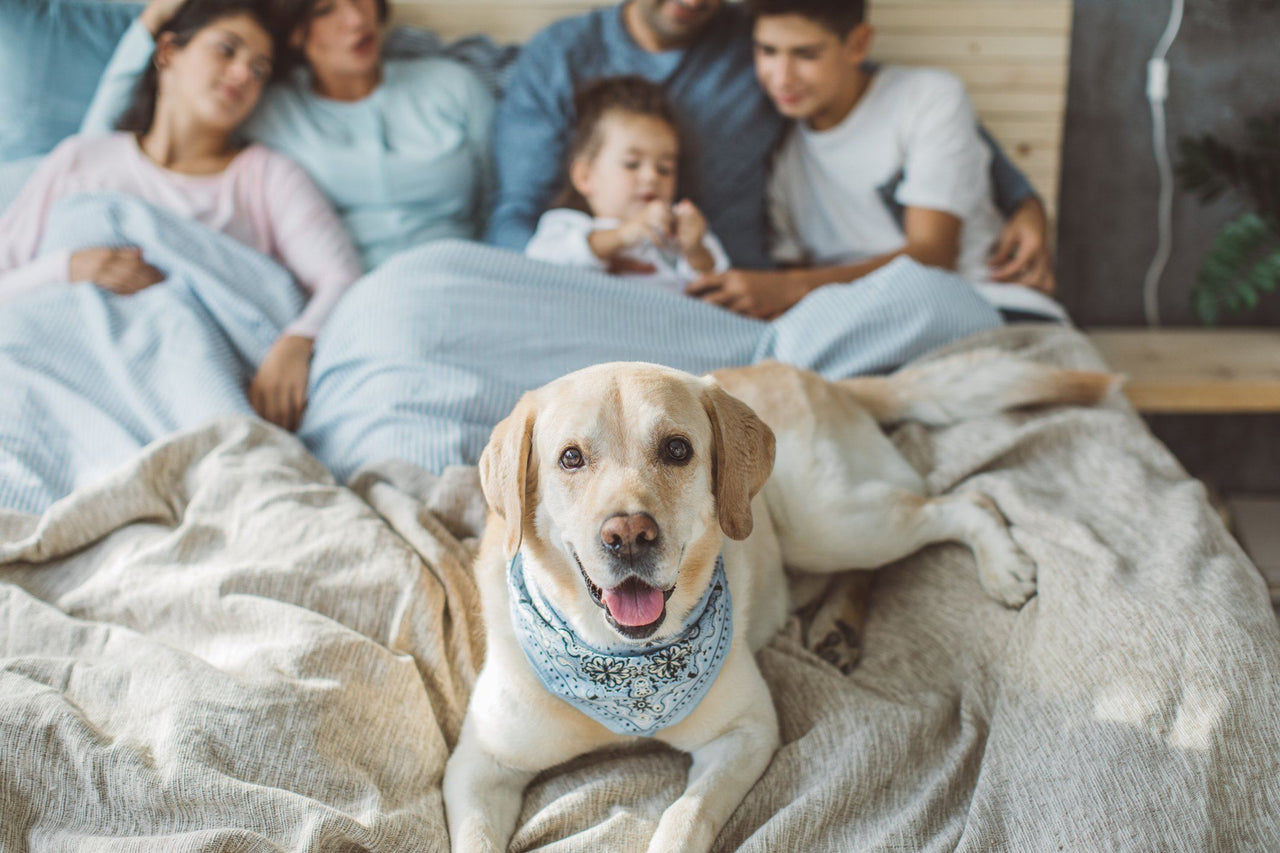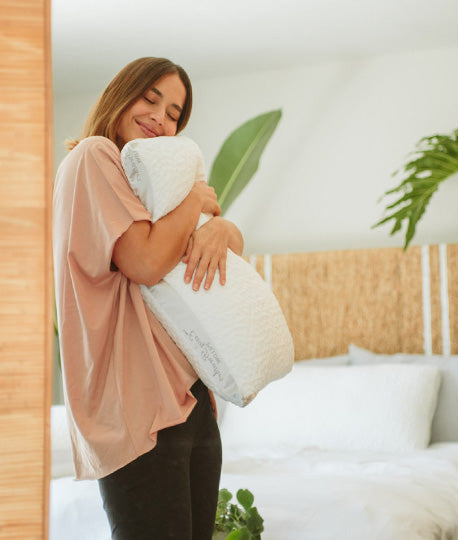Is Your Dog Sleeping in Bed With You?


Every pet owner has a unique relationship with their animal companions but one thing is always true: they're like family. Many owners do everything together with their pets from sharing dinner tidbits to regular evening walks. Furniture, on the other hand, is a surprisingly divisive matter.
Some pet owners adore their furry friends but would never let shedding and careless claws come into contact with their beautiful furniture. While others snuggle on the couch together and, more impactfully, allow their pets up into the bed at night.
In a home with many pets, inevitably only a few will take an initial post on the bed. Some pets like to snuggle up close to their owners while others curl up more traditionally at the foot of the bed. Some have a distinct preference for sleeping in the same room, but on a chair or their pet bed nearby. And some, most likely cats, sleep anywhere in the house they want and only sometimes join you in bed.
Snuggling up with pets or having a friendly animal curled up at your feet is one of the most relaxing joys in life. But it can also have a severe impact on your sleep and, incidentally, the comfortable rest of your pets. If you love your dog sleeping in bed with you, there are a few things to consider. When any two creatures decide to sleep in the same bed, the way they sleep and the comfort of the bed itself will combine to create a shared sleep quality.
Sharing a Bed
Anyone who has shared a bed with a romantic partner or even a friend at a sleepover knows that the experience is very different from sleeping alone. The same rule applies to pets, and your sleep will change with each additional person or animal you add to your sleep environment.
Not only does each new mammal add extra heat to the bed, but they also move around and have favored sleep positions. So the jigsaw puzzle of finding a comfortable way to sleep among others is always an adventure.
Most pet owners who share a bed with pets and perhaps a partner have discovered that the key is usually routine and bedding. Over time, you figure out how to sleep the most comfortably, how many blankets and pillows you need, and if any of your pets would be happier with a pet bed of their own.
Sleeping Peacefully or Fitfully
Part of figuring out how to optimize your shared sleep quality is to assess just how peacefully you and your pets sleep each night. Studies have found that while there is no definitive answer for the wisdom of pets in or out of bed. But what matters is how restless your pets are in bed and, to a certain extent, how restless you are.
If your pets sleep fitfully, if they move around a lot or if they get in and out of bed during the night, they can and will decrease your sleep quality. It's about the same as having a partner who tosses and turns all night, constantly waking you up and interrupting your REM cycle.
However, if your pets are very peaceful sleepers whose sleep cycle matches your own, they can benefit your sleep quality by providing comfort and companionship.
Bed Temperature
The second important consideration when allowing pets to jump up on the bed at night is the temperature you're creating. Bed temperature is all about heat distribution. Snuggling up with a partner under the covers creates shared heat, but so do pets above the covers. Larger dogs are particularly strong heat sources, and if they like to cuddle up next to you, this can significantly increase sleeping temperature.
While a warm bed may be welcoming, high bed heat is terrible for sleep. Everyone knows it's hard to sleep on hot summer nights, but too much body heat in the bed can be just as much of a problem. A cooling topper and the right sheets and blankets can help, but it's important to be aware of how the excess heat from your dog sleeping in bed with you is affecting everyone's sleep.
Older Pets Get Creaky
Another thing to consider is what happens as your pets get older. Pets age faster than humans do, depending on their size and breed. Somewhere between seven and twenty years of furry life and your pets will begin to get a little creaky. Often, one of the first signs that your pet is slowing down is how difficult it is for them to jump on the bed. Both dogs and cats usually have little trouble hopping up the short distance to snuggle. However, if your pet has started taking two or three tries to get up, or has begun using their back legs halfway up, this is a sign that their joints are deteriorating.
It can also be a sign that sleeping anywhere will become less comfortable. The end of your bed or snuggled up with you might be friendly, but it may or may not be the most effective way for your pet to sleep. Many pet owners who believe in bed snuggles will eventually get their pet a bed of their own to make old age more comfortable. Memory foam beds for pets are great for achy pet joints and save your pet the trouble of jumping up and hurting their joints further.
Pet Beds vs. Pets in Your Bed
Pet beds are an essential part of taking good care of your pets, both at home and away from home. Most pets have a favorite blanket and an ideal place to nap in the public rooms of the house as well as your bed, but it's also important to realize when they need a pet bed of their own.
If your pet is restless or overly warm, you may want to encourage them to sleep in a pet bed in your bedroom instead of up on the bed so both of you can get better sleep. A pet bed in the bedroom is also a nice thing you can do for elderly pets who can't get up on the bed or share space as easily anymore. Finally, pet beds in places like the living room allow your pet to nap comfortably during the day while keeping a friendly watchful eye on the family. For more information about improving the quality of sleep for both you and your pets, contact us today!



